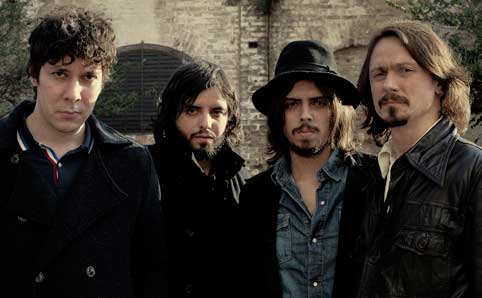
They have solid careers, built-in audiences and bookings at some of the top live music venues in São Paulo; but that hasn’t stopped many São Paulo bands and musicians from doing a little moonlighting, paying tribute to their idols as cover acts – and making a very welcome dime from the practice, too.
‘It’s been common in São Paulo nightlife since the 1980s. What’s different now is that there are lots of cover bands that also produce original work,’ says Alê Yousseff, owner of Studio SP, a larger-sized cover shows hotspot.
Indeed, in a surprising move, Studio SP’s Rua Augusta location, which has a capacity for over 600 people and has long been a standard-bearer for live music in the city, is currently moving to a diet of exclusively cover bands, saving its smaller, Vila Madalena space, with a 300-seat capacity, for original music.
Perhaps the best known of the city’s cover artists is Miranda Kassin, who has made an impressive name for herself doing a show, ‘I Love Amy’, based on Amy Winehouse’s fine repertoire – an act she’s been presenting since 2008.
 |
| Seu Chico |
Another prime example of cover band success can be found in Seu Chico, a group made up of Pernambucan musicians dedicated to Chico Buarque’s songs.
‘At our first show, the house was packed,’ recalls singer Tibério Azul of one small bar.
‘We played one season there, but after three months, the owner called us in for a chat and put an end to it, thanks to what he considered an “excessive audience”.’
Seu Chico was pulling such a large Buarque-hungry crowd that it spilled out onto the street and right down the block, drawing the attention of City Hall, and leading to a fine for overcrowding. ‘After that, we decided to officially establish the band and to play what we liked, while meeting the demands of the market,’ says Azul. ‘It still works for us today.’
Many musicians involved in cover projects tell similar stories of their origins: like so many things, it all starts out as a bit of fun, then success comes easily doing already-popular tracks, and the cover band format becomes a necessity, helping the band survive the pitfalls of the music market.
‘We’ve got bills to pay. Making a living in art is complicated in Brazil,’ admits Reginaldo Lincoln of Vanguart, a band that plays Beatles songs under the name Vang Beats.
And then there are those who use such side projects to fund their original work. The band Del Rey brings together the vocalist China from the band Mombojó to recreate classic tracks by Roberto and Erasmo Carlos. China explains, ‘The money we earn in Del Rey, we invest in our own projects. And it lets the band circulate in places our work normally doesn’t reach: if a fan likes Del Rey, he’ll end up coming to my show and Mombojó’s, and buying our albums.’
Yousseff agrees with the shared-audience strategy, and sees the tribute shows as a legitimate alternative source of income for the musicians involved.
And for some, it brings additional creative benefits. ‘We don’t just do this for the money, but also because it’s interesting to see how other artists build their arrangements. These shows have had a positive effect on our own albums,’ says Pedro Metz, the guitarist and vocalist of Pública, a band that pays tribute to ’90s British arena rock like Blur, Oasis and Radiohead. ‘Plus, it lets us get away from our own repertoire for a bit.’
 |
| Pública |
Veterans like Edgard Scandurra, the guitarist of Ira! who also leads a Serge Gainsbourg tribute project, Les Provocateurs – also see other artists’ repertoires as a welcome occasional break. ‘Our own music comes with a large amount of responsibility, so it’s good to be able to have some fun,’ he says.
And even with all the benefits, economic or otherwise, for all the artists, their original work is still the force driving their musical passion and their careers. ‘It’s our creation,’ says Metz, ‘so it’s a daily battle. Playing other people’s albums is great, but performing our own music is much more than that.’ Scandurra puts it this way: ‘They’re two very different feelings of involvement and responsibility. But what I really like is having a guitar in my hands, and making some noise.’



